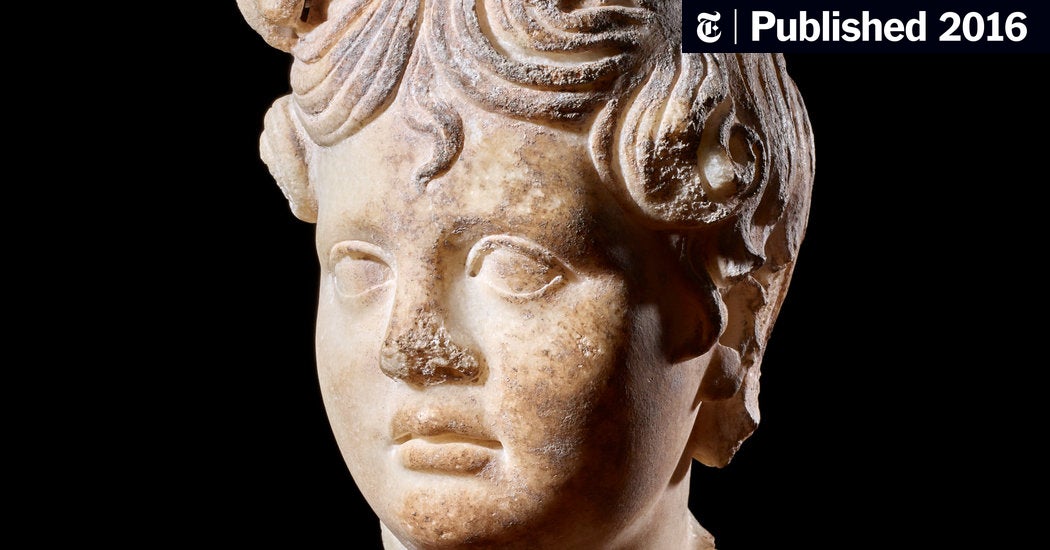During the 28 previous editions of The European Fine Art Fair in the Dutch town of Maastricht, its appeal has been straightforward. “It’s like the Met museum, but everything is for sale,” said Boris Vervoordt, a director of Axel Vervoordt, a gallery based in Belgium.
The gallery is again among the 275 dealers showing their wares at the 29th edition of Tefaf, which takes place March 11 to March 20 at the Maastricht Exhibition and Congress Center.
Though contemporary works from around the world are now part of the mix, the fair has also been one of the few places where older European pieces are available, like a head of Eros, a Roman work in marble from the first century B.C., at the Vervoordt booth.
The nonprofit European Fine Art Foundation, which runs the fair, made news this year by announcing a major expansion to the United States. It has joined with the art advising firm Artvest to stage two new fairs: Tefaf New York Fall, to take place in October, and Tefaf New York Spring, replacing two existing fairs at the Park Avenue Armory.
Anyone expecting that the westward focus means big changes at the fair Maastricht will be disappointed, according to its leaders: Tefaf will, as it always has, concentrate on the top tier.
But there will be structural tweaks this year, including a streamlined arrangement of aisles for better flow and accessibility, said Patrick van Maris, the fair’s chief executive.
Willem van Roijen, Tefaf’s chairman, said there were a few dealers who thought they were not getting enough traffic at their booths. “I think they won’t complain anymore,” he said. “At least I hope not.”
Every year the fair welcomes some new galleries. First-time exhibitors in the fair’s main sectors include the Buchmann Galerie of Berlin; Pearl Lam Galleries of Shanghai, Singapore and Hong Kong; and Waddington Custot, Burzio and Sydney L. Moss, all from London.
Another new feature is an early access event, which took place on March 10, fitting the trend of catering to V.I.P. buyers who like to make big purchases early — a trend that galleries often prefer as well. “Some collectors want special treatment, so we gave them a special preview — a preview before the preview,” Mr. van Roijen said.
Each gallery got to put 10 collectors names on the Early Access list, which targets people who know exactly what they want. “They fly in, do business, and they’re back in New York for dinner,” Mr. Van Roijen said.
The fair’s location in Maastricht — sort of near everything, but not really close to anything — is also part of its unique character. “The good thing about Maastricht is that there are no distractions,” said Gary Tinterow, the director of the Museum of Fine Arts in Houston. “And the bad thing is it’s not a tourist center. But you’re not overwhelmed by lookers as you can be at Art Basel Miami.”
Mr. Tinterow has attended Tefaf many times, both in his current job and as a longtime curator at the Metropolitan Museum of Art, and he called it “the queen fair of European art.”
He added that one memory still stings, however: “You always remember the things that got away— three of four years ago, there was a fantastic Picasso drawing that someone else bought.”
Tefaf offerings tend to the very high end, and “museum quality” is a phrase frequently used by dealers. As Mr. Vervoordt put it, “You’re not there to buy furniture for your home.”
Of course, it all depends on the home. A collector with lots of wall space and deep pockets could do worse than the booth of Hammer Galleries of New York, which will show 20 works by Matisse and Picasso estimated to be worth some $100 million.
“Having done many art fairs, even as a dealer they can become a blur,” said Howard Shaw, Hammer’s president. “So we try to create a mini-exhibition. The clients respond better, and they remember us.”
Where possible, Hammer has paired the works thematically, as with Matisse’s “L’Artiste et le Modèle” (1921) and Picasso’s “Le Peintre et son Modèle” (1964).
The Richard Green Gallery of London is presenting an exhibition in part of its booth devoted to the 19th-century French painter Eugène Boudin, known for his beach and water scenes.
“He’s an undervalued artist and he’s the father of Impressionism — he taught Monet,” said Jonathan Green, the gallery’s president.
But even for an undervalued artist, “you have to pay a million dollars for a good Boudin,” Mr. Green added.
Mr. Green, who is on Tefaf’s board, said he strongly endorsed the New York expansion. “It’s exciting for the art world, and New York will embrace it,” he said.
Those same collectors whom Mr. van Roijen envisions jetting into Maastricht for a day are on Mr. Green’s mind, too. “We’re waking up and smelling the coffee,” he said. “We have to go where the market is.”
For now, Mr. Green is focused on presenting old masters that tend to be a success at the Maastricht fair. Jan Brueghel the Younger’s “Juno in the Underworld” (circa 1620) and a 1632 still life by Pieter Claesz featuring a herring will be hanging not far away from the Boudins.

